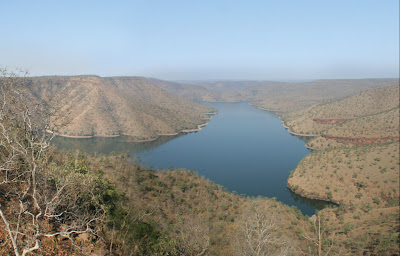U Sudhakar Reddy
National Investigation Agency found that the terror suspects are
using carbon paper to wrap the explosive materials like detonators to avoid being caught
by X-ray machine scanners at airports, temples and VIP offices.
In the petition filed in the Mecca Masjid blast case NIA said that the accused terror
suspects were using the technique which was earlier used by the fake currency racketeers
as the carbon absorbs x-rays and images are blurred.
X-ray scanners at the modern airports are upgraded even to detect them but at old
airports, small airports, temples and government offices including Chief Minister’s
Office are old and fail detect the material wrapped in carbon paper says officials.
NIA Special Public Prosecutor Mr.P Vishnuvardhan Reddy in the petition filed in Fourth
Additional Metropolitan Sessions Judge court in Nampally regarding the cancellation of
bail of Macca Masjid blast suspects Devendra Gupta and Lokesh Sharma stated that the
terror suspects used carbon paper.
One of the listed witnesses Rohit Kumar Jha revealed that he had seen 10 to 15 detonators
and some rounds of ammunition in the room of Devendra in Rajasthan.
“He has seen some detonators wrapped up in a carbon sheet in the room of accused. When he
enquired with Devender Gupta, why he was wrapping them in carbon papers, he replied that
machines cannot detect detonators wrapped in carbon papers,” revealed NIA in the petition.
A senior official of Intelligence department said ,”this is old technique where carbon
paper is used by smugglers and racketeers. Terror suspects are also doing it. All the
X-ray scanners have to be upgraded immediately,”
National Investigation Agency found that the terror suspects are
using carbon paper to wrap the explosive materials like detonators to avoid being caught
by X-ray machine scanners at airports, temples and VIP offices.
In the petition filed in the Mecca Masjid blast case NIA said that the accused terror
suspects were using the technique which was earlier used by the fake currency racketeers
as the carbon absorbs x-rays and images are blurred.
X-ray scanners at the modern airports are upgraded even to detect them but at old
airports, small airports, temples and government offices including Chief Minister’s
Office are old and fail detect the material wrapped in carbon paper says officials.
NIA Special Public Prosecutor Mr.P Vishnuvardhan Reddy in the petition filed in Fourth
Additional Metropolitan Sessions Judge court in Nampally regarding the cancellation of
bail of Macca Masjid blast suspects Devendra Gupta and Lokesh Sharma stated that the
terror suspects used carbon paper.
One of the listed witnesses Rohit Kumar Jha revealed that he had seen 10 to 15 detonators
and some rounds of ammunition in the room of Devendra in Rajasthan.
“He has seen some detonators wrapped up in a carbon sheet in the room of accused. When he
enquired with Devender Gupta, why he was wrapping them in carbon papers, he replied that
machines cannot detect detonators wrapped in carbon papers,” revealed NIA in the petition.
A senior official of Intelligence department said ,”this is old technique where carbon
paper is used by smugglers and racketeers. Terror suspects are also doing it. All the
X-ray scanners have to be upgraded immediately,”


